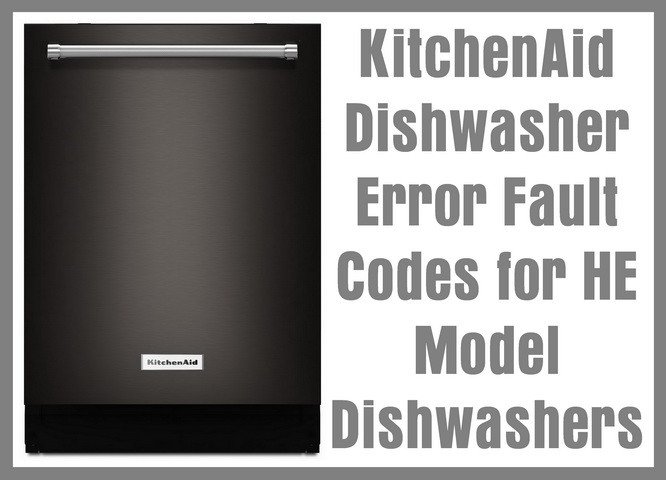
Error Code F1 on a KitchenAid dishwasher is like a tiny distress signal waving from the depths of your appliance. It indicates a problem related to the water heating element of the dishwasher. You can think of the heating element as the heart of your dishwasher, responsible for warming up the water to effectively clean your dishes. Without it working properly, your dishwasher might not clean the dishes as expected. This error isn’t something to ignore; it’s a sign that your trusty dishwasher may need some professional attention to ensure it’s operating safely and efficiently.
Understanding Error Code F1
So, what exactly does Error Code F1 mean? In the simplest terms, this code is your dishwasher’s way of telling you that there’s been a snag with the water heating component. Imagine trying to wash greasy dishes with cold water—it’s just not as effective, right? The same goes for your dishwasher; it needs to be able to heat water to a certain temperature to clean effectively.
The Error Code F1 generally points to issues such as a malfunctioning heating element or a problem with the thermostat, which is supposed to regulate the water temperature. These internal components can become faulty over time. It’s a bit like a car engine that struggles to start on a cold morning. If left unchecked, this can lead to your dishwasher not cleaning properly, or in the worst-case scenario, it could lead to further component failures.
Before you worry too much, keep in mind that while this sounds technical, recognizing the code is the first step toward a fix. You don’t have to be a dishwasher whisperer to handle this; it’s all about understanding that the machine is calling for help.
Can I Fix It Myself?
Now, you’re probably thinking, “Do I need a technician, or can I fix it myself?” Here’s the deal: while some DIY enthusiasts might feel tempted to dive in and start tinkering, it’s usually best to proceed with caution. The heating element and thermostat are essential components of your dishwasher. They require a certain degree of electrical understanding to handle safely.
Tinkering with electrical components without the right know-how can be dangerous, similar to fiddling with a car’s engine without proper training. You also risk invalidating any warranty if you attempt repairs yourself. Instead of risking further damage or safety issues, it might be wiser to save time and potential headache by calling in a professional.
If you still feel inclined to try a few basic checks yourself, you could look into power supply issues or reset the dishwasher to see if the error persists. If you’ve unplugged it and there’s still no improvement, or if you’re simply unsure about any step, calling a technician might be your best move.
When to Call a Technician
Alright, let’s talk about when it’s truly time to call a technician. If the Error Code F1 keeps appearing after a reset or persists despite your best troubleshooting efforts, it’s a clear signal to bring in a pro. Technicians have the tools and expertise to delve deeper into the issue, whether it’s replacing the heating element, fixing the thermostat, or addressing any related electrical concerns.
Think of the technician as a doctor for your appliance. Ignoring repeated signals from your dishwasher is like ignoring symptoms that could lead to bigger problems. An experienced technician can ensure that your machine is back to its sparkling best, avoiding complications that could arise from prolonged issues.
Scheduling regular maintenance can also prevent these issues from cropping up in the first place. Like changing the oil in your car to keep it running smoothly, having a professional check your appliance can keep it in top shape and nip potential problems in the bud.
Preventative Tips for the Future
To keep your dishwasher running smoothly and avoid seeing that F1 error code in the future, consider a few preventative measures. Regular cleaning of your dishwasher is key. Residual soap and food particles can build up over time, leading to blockages or inefficiencies. Running an empty cycle with a cup of vinegar once a month can help keep things fresh and clean.
Also, keeping an eye on the dishwasher’s performance can help spot issues before they become serious. If you notice it’s not cleaning as well as it used to, or if dishes come out wetter than usual, these may be early signs to investigate before an error code appears.
By understanding the Error Code F1 and knowing when to call in the pros, you’re taking a proactive step in maintaining your KitchenAid dishwasher’s longevity and performance. Remember, your dishwasher is there to make life easier—not more complicated—so don’t hesitate to seek help if you need it.